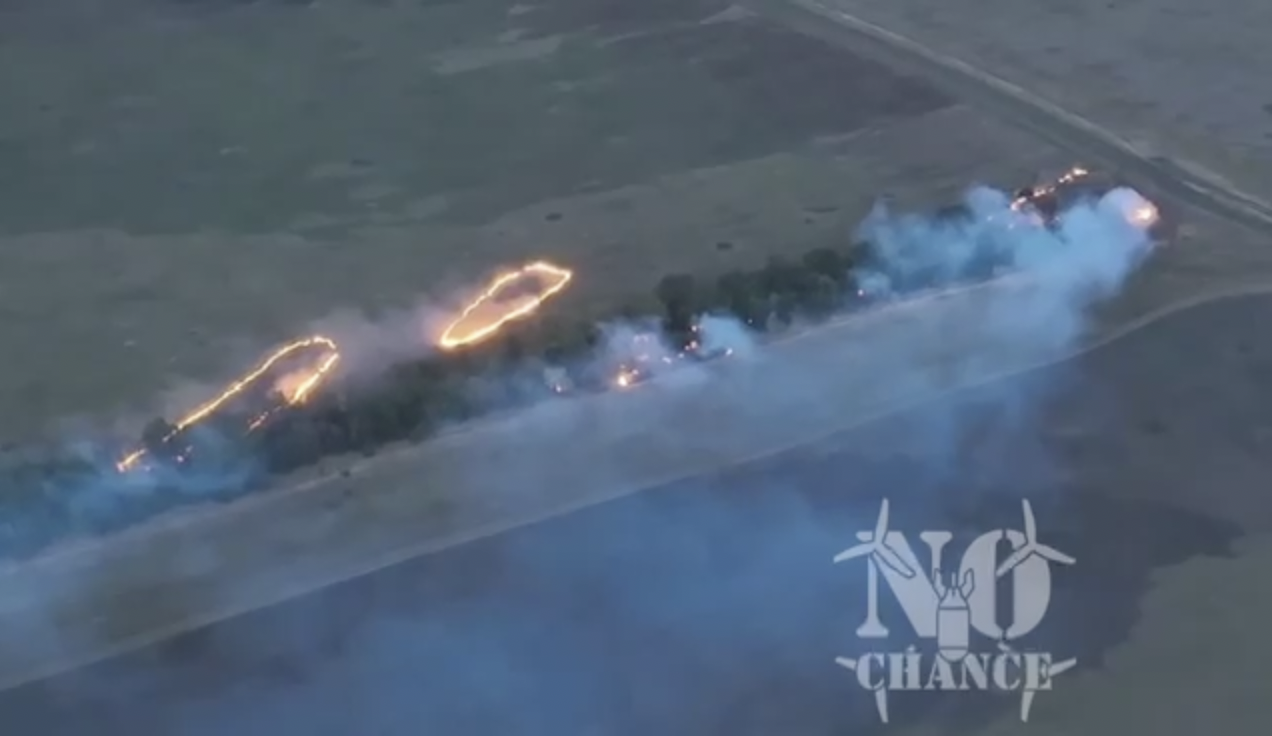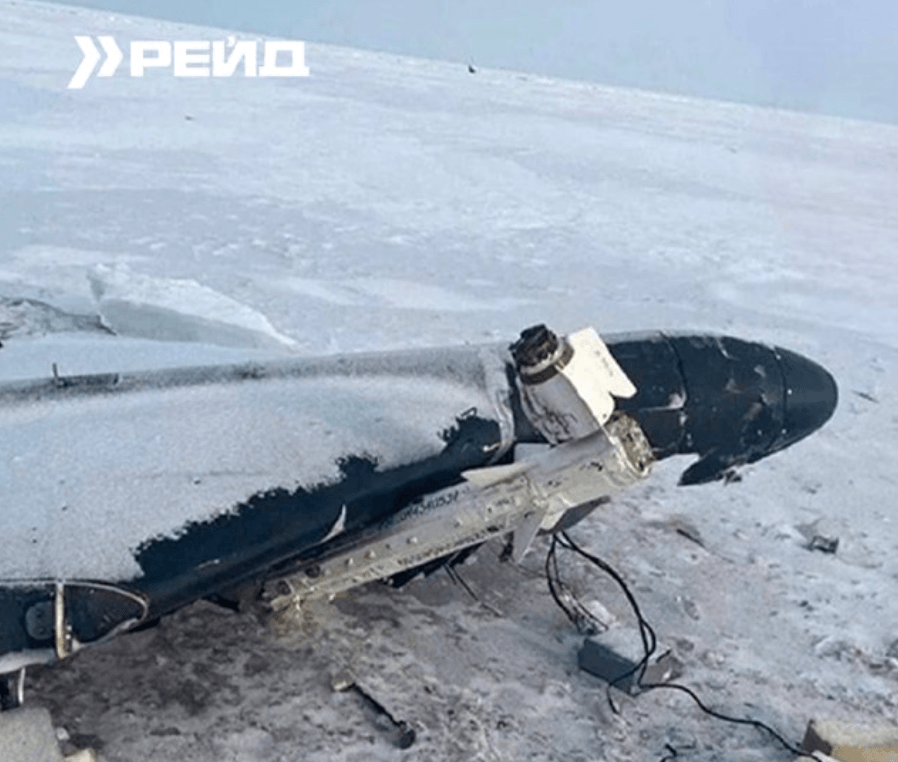Ukraine introduces ‘new’ armored personnel carrier, Khorunzhyi

Ukraine's Defense Ministry announced on Sept. 2 that it has approved a new armored personnel carrier (APC) for use by its armed forces.
The Khorunzhyi – which means "standard-bearer" and was a military rank in Cossack armies – has been in development for some time, and a lone experimental model was spotted on the front lines as far back as February of last year.
The latest announcement should see many more heading there soon, a badly-needed and domestically-produced boost to the equipment needs of Ukraine's armed forces.
What is an armored personnel carrier?
Armored personnel carriers (APCs) are one of the unsung heroes of any battlefield. They don't do anything particularly flashy beyond moving troops around with hopefully enough armor to protect those inside from enemy threats.
But on the battlefield in Ukraine, those threats are numerous and deadly, particularly the massive range of drones which have revolutionized modern warfare – not to mention the recently-reported innovation of a thermite-dropping variant.
Along with the usual snipers, tanks, artillery and mines, simply moving troops from one place to another is risky business.
Since the start of the full-scale invasion, Russian forces have repeatedly demonstrated what happens to soldiers transported by inadequate vehicles.
This has perhaps been most starkly illustrated by the creation of motorcycle units earlier this year who "died by the dozen," according to a report in Forbes.
And their APCs haven't fared much better – with the destruction of Russia's more modern stock of vehicles, Kremlin troops have been forced to rely more and more on Soviet-era vehicles as the war has dragged on.
The BTR-50, first introduced in 1954, has proven particularly ineffective.
Imagine being a Russian soldier in the year 2024 being ordered to storm a Ukrainian position unsupported across a large open field in a BTR-50 from 1954 pic.twitter.com/0ucP6nKx9f
— Oliver Alexander (@OAlexanderDK) May 19, 2024
Which APCs does Ukraine use?
Ukraine has received hundreds of APCs from its Western partners, most notably some 300 U.S.-made M113s.
But Ukraine still does not have enough for its needs – a Forbes analysis in April suggested Kyiv's forces had a shortfall of around 1,000, noting that as well as receiving hundreds of APCs, they were also losing many on the battlefield.
"The immense vehicle losses we have so far witnessed have been a factor in the stagnation of the conflict, which is more to the benefit of Russia given its greater resources," Martin J. Dougherty, weapons expert and author of "Aircraft, Tanks and Artillery of the Ukraine War," told The Kyiv Independent.
"Ukrainian forces need vehicles – a lot of them – to offset the enemy’s advantage in numbers. The mobility they provide acts as a force multiplier and increases the options available to bold, creative commanders."
This has meant Ukraine has taken steps to fill the gap with its own domestically-produced version, the Khorunzhyi.
What is the Khorunzhyi?
In the early months of the war while waiting for more modern APCs from Western allies, Ukraine had to rely on older Soviet models, one of which was the BTR-60.
Since then, Ukraine's military has taken steps to update it into an APC capable of meeting the demands of today's battlefield, and the Khorunzhyi is the result.
The BTR-60 had numerous faults, including an insufficiently powerful engine, abysmal armor capable of withstanding little more than a rifle bullet, and tiny exit hatches placed a meter above ground, meaning troops essentially had to crawl out and then drop to the ground.
The Khorunzhyi has addressed all of these issues.

Two 90-horsepower gasoline engines have been replaced with a 330-horsepower diesel engine, which can propel it to more than 80 kph.
And the engine's placement now means troops can disembark from the back of the vehicle through a door that doesn't have to be crawled through.
It has new armor plating made from Finnish steel which Ukraine's Defense Ministry said can withstand "shots from a large-caliber machine gun from a distance of 10 meters."
Crucially, the hull of the vehicle is reinforced and it is equipped with "anti-mine seats."
And as well as modern electronics, it also comes with air conditioning, a useful feature when sitting in a steel box during the summer months.
It's also lightly armed with either a 14.5 mm machine gun or a 30x113 mm chain gun.
Ukraine's Defense Ministry also said it would be produced in six different variants, including a medical evacuation model, and a self-propelled mortar model.
It did not specify how many would be produced or when they would be on the battlefield.
Is an APC the same thing as an IFV?
An APC can look very similar to an infantry fighting vehicle (IFV), but to qualify as an IFV it needs to also be armed with a cannon capable of engaging the enemy and providing fire support.
Both are used for similar transport roles but if you were, for example, evacuating wounded soldiers from an area still under heavy enemy fire, you'd rather do it in an IFV rather than an APC.

Unfortunately, Ukraine also has a lack of these. There are joint production plans between Sweden and Kyiv that aims to provide 1,000 modern Combat Vehicle 90s (CV90), with around 50 of them already donated by Stockholm from its own stocks.
Used alongside the U.S.-made Bradley, widely considered one of the best IFVs in the world of which Ukraine has received around 300, it means Ukraine has a small but still formidable IFV capability.
Bradleys in particular have proven themselves especially effective, even taking on Russia's most advanced tank on the battlefield, the T-90.
But at present, there simply aren't enough APCs or IFVs in Ukraine to satisfy the army's demand, but the Khorunzhyi could plug some of that gap until more arrive.












